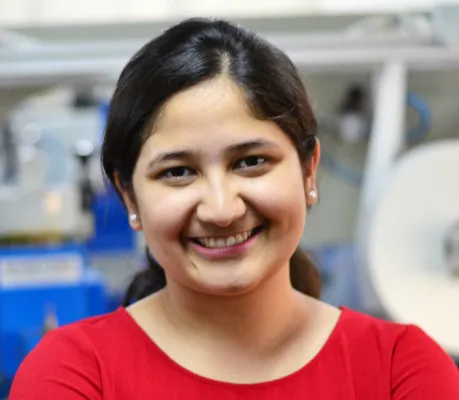Holistic approach, collective action needed to address menstruation issues of rural women
Menstruation and the women in rural India. What do we need to do to change things?
When it comes to menstruation the gulf between rural and urban women broadens considerably. While growing up we have seen how menstruation was not a subject that was discussed freely by our teachers and mothers, yet it was a conversation we have all had. With television, the internet and more awareness and education conversations around menstruation have become less inhibited.
However, when it comes to rural areas we see a complete contrast. With the lack of resources, education and awareness about personal hygiene, forgot information about hygiene products the women don’t even have any conversation around menstruation.

Given the taboos surrounding it, it is often seen as dirty and unpleasant and hence, never gets the attention it needs. So what are the challenges rural women face with regard to menstruation? YourStory spoke with a few experts from the industry to understand the ground realities and how can we address those.
What do the numbers say?
Suhani Mohan is the Co-founder of Saral Designs, an indigenous women’s health startup that creates high-quality and affordable sanitary napkins and is focused on promoting menstrual hygiene among rural Indian women. Citing the Motilal Oswal Research Report 2016, she states that less than 16 percent women use sanitary napkins in India. Of this, the percentage of women in rural areas using sanitary napkin is in single digit. Says Suhani,
“During our surveys across villages in Maharashtra, we have seen this vary from 0 percent to 40 percent depending on the proximity of the village from a city and their average family incomes.”
Aditi Gupta, Co-founder of Menstrupedia, says, “According to the latest National Family Health Survey (2015-16) report, the usage of sanitary napkins among Indian women is 48.5 percent in rural areas, 77.5 percent in urban and 57.6 percent overall.
There has been an increase in the number of rural women using sanitary napkins, but as Aditi rightly points out, “the number of girls missing school due to menstrual pain has not gone down.”
Sanitary napkins
Most of the women in rural areas are using unhygienic products such as wood shavings. According to Suhani,
"The rural picture is still grim where there is a lot of silence on the subject. There are many women who have never seen or touched a sanitary napkin in their lives. It is a learning curve for them to get onboard with usage and disposal of pads."
As per the research done by Saral Designs, the three primary reasons that influence the lack of usage are:
Lack of awareness of hygiene: Most rural women are not aware of the concept of menstrual hygiene. There is so much stigma around periods being dirty that women choose to use dirty/damp cloth repeatedly without discussing it with anyone.
Lack of last mile access: In most rural areas, sanitary napkins are not available for several kilometers. Suhani points out, “Typically, most retail shops are also guarded by men which makes the transaction very difficult for rural women.”
Lack of affordability: In some areas, there's a lack of good quality and high-absorbent affordable products.
“Most low-cost sanitary pads (even the low-cost ones from multi-national companies) are small in size and made from different raw materials as per their lower price versions. While in a general scenario, premium consumer products have superior performance as compared to the low price ones, what makes it a challenge with sanitary napkins is that women have an alternative which may not be as hygienic as the pads but “works long” enough. This really disincentivises girls to move from cloth to pad as they see no perceived advantage,” says Suhani.
Other related issues

Menstruation for most women is accompanied with pain and discomfort and with the lack of awareness and access to sanitary napkins and other hygiene products it becomes very difficult for girls to go to school and hence, many tend to drop out.
“Twenty-three percent of girls drop out of school when they start menstruating due lack of affordability of menstrual hygiene products. Dropping out of education drives early child marriage and makes them lose the opportunity to be in the workforce,” says Suhani.
While education and accessibility continue to be a challenge, and though it is okay for women to use cloth, according to Aditi, the problem is the lack of hygiene. “We are not able to communicate it to the women that they need to wash the cloth and allow it to dry in the sun. Drying it in the sun is of utmost importance as it helps prevent infections when the cloth is reused.”
Need of the hour
How does one change the state of affairs for women in rural India? The need of the hour is a holistic approach. Multiple stakeholders need to work together to tackle problems at multiple levels.

While organisations like Menstrupedia are working on awareness and education and others such as Saral Designs on production and distribution of sanitary napkins. “Using SWACHH, we have optimized both costs of production and distribution which cut the costs with zero compromises on quality,” says Suhani.
And the onus of change, as Aditi points out, is not on one stakeholder and nor should they think like that. This has to be a collaborative effort by educators, activists, sanitary napkins and other women hygiene products manufacturers and the government. She says,
"We have to talk about better sanitation facilities and waste disposal management. Awareness and education become such an integral part of this. School textbooks don't cover menstruation. It is just very little information that every girl needs to look after herself and even that is not reaching her."
So here is what the stakeholders need to work on together for us to see a difference: collective action in awareness creation, product access, and affordability, availability of clean toilets and disposal systems and health consultation.







